#The Fortification Series
Explore tagged Tumblr posts
Text
MAGIC 2͏ ͏ ͏͏ ͏─── ͏ ͏ ͏͏ ͏ ͏ ͏͏ ͏禅 ͏ ͏ ͏͏ ͏ ͏ ͏ ͏͏ ͏[ ͏ ͏ ͏͏ FANTASY DR ͏ ͏͏ ͏]



yoncé speaks: for the lovely anon who asked for more spells
SPELLS ! ✩
✶ Reality Warp: Alter the battlefield to your advantage by manipulating the environment. Create or destroy terrain, summon barriers, or change the properties of the area to hinder enemies and aid allies.
✶ Genesis Wave: A powerful creation spell that can generate new structures, landscapes, or even life forms. Use it to build fortifications, create allies, or reshape the battlefield to your liking.
✶ Eden's Garden: Create a lush, vibrant garden that heals allies, entangles enemies, and produces magical fruits that grant temporary power boosts.
✶ Quantum Shift: Alter the properties of objects and terrain, turning solid ground into liquid, walls into doorways, and weapons into harmless objects.
✶ Arcane Arsenal: Conjures an array of magical weapons that float around the caster, ready to strike at nearby enemies. The weapons can be of various types, dealing different kinds of damage.
✶ Prismatic Elemental Storm: Combine all elemental magics into a devastating storm of fire, water, earth, air, and lightning. This spell can target multiple enemies, creating chaos on the battlefield.
✶ Aurora Veil: A defensive spell that creates a shimmering barrier of light and ice around allies, reflecting and absorbing incoming attacks while slowly healing those within its radius.
✶ Elemental Confluence: Combines the power of the four classical elements—earth, air, fire, and water—into a devastating attack that deals massive damage and affects a large area.
✶ Verdant Surge: Causes a rapid growth of plants and vines in the area, which can entangle enemies, create cover, or provide a boost to nature-based magic.
✶ Glacial Prison: Encases a target in a block of ice, immobilizing them and dealing cold damage over time. Can also be used defensively to shield allies.
✶ Volcanic Eruption: Causes a violent burst of magma to erupt from the ground, dealing fire and earth damage over a wide area and creating hazardous terrain.
✶ Abyssal Tsunami: Control the ocean to create a massive wave imbued with dark energy, capable of engulfing and draining the life force of enemies.
✶ Thunderstorm Armament: Envelop yourself in a storm of lightning, increasing your speed and reflexes while discharging electricity with each attack.
✶ Gale Force Prison: Trap enemies in a swirling vortex of wind that immobilizes them and slices through their defenses with razor-sharp gusts.
✶ Frostbite Field: Create a vast area of extreme cold that freezes everything in its path, slowing down enemies and making the terrain hazardous.
✶ Quicksand Trap: Manipulate the earth to form quicksand beneath your enemies, pulling them down and immobilizing them.
✶ Meteor Shower: Call down a barrage of meteors from the sky, causing widespread devastation and igniting the battlefield.
✶ Fireball Volley: Launch a rapid series of fireballs at multiple targets, causing explosive damage.
✶ Ice Spear: Create a sharp spear of ice that can pierce through armor and freeze the target on impact.
✶ Lightning Bolt: Summon a concentrated bolt of lightning that strikes with pinpoint accuracy, stunning and electrocuting the target.
✶ Rock Barrier: Erect a sturdy wall of rock that provides cover and can be used to block enemy attacks.
✶ Water Whip: Control a stream of water to lash out at enemies, binding and restraining them with powerful currents.
✶ Wind Blade: Form a blade of compressed air that slices through enemies with the speed and sharpness of a razor.
✶ Flame Cloak: Envelop yourself in a cloak of fire, enhancing your physical attacks and burning anyone who comes into contact with you.
✶ Tidal Wave: Summon a large wave of water to sweep away enemies and create a barrier or path.
✶ Earthquake: Shake the ground violently, causing enemies to lose balance and fall while creating fissures that can trap or hinder movement.
✶ Blizzard: Create a powerful snowstorm that reduces visibility, slows down enemies, and inflicts frost damage over time.
✶ Thunder Clap: Generate a deafening shockwave of sound and lightning that stuns and disorients enemies.
✶ Magma Burst: Cause molten rock to erupt from the ground, creating hazardous terrain and dealing continuous fire damage.
yoncé speaks: hope you like :D
#yonce ͏ ͏ ͏ ͏★#my dr things 𓈒 𑁯 ⁀ ִ ۫#fantasy dr#mcu dr#mha dr#shiftblr#reality shifting#shifting community#shifting#shifters#desired reality#shifting motivation#manifesation#things to script#dr scripting#shifting script#scripting ideas#shifting ideas#magic
143 notes
·
View notes
Photo

Utah Beach
Utah Beach was the westernmost of the five beaches attacked in the D-Day Normandy landings of 6 June 1944 and the one taken with the fewest casualties. Paratroopers were also dropped behind Utah, and despite being widely dispersed and suffering heavy casualties, they managed to secure this western flank of the invasion and liberate the first French town, Ste-Mère-Église.
Operation Overlord
The amphibious assault on the beaches of Normandy was the first stage of Operation Overlord, which sought to free Western Europe from occupation by Nazi Germany. The supreme commander of the Allied invasion force was General Dwight D. Eisenhower (1890-1969), who had been in charge of the Allied operations in the Mediterranean. The commander-in-chief of the Normandy land forces, 39 divisions in all, was the experienced General Bernard Montgomery (1887-1976). Commanding the air element was Air Chief Marshal Trafford Leigh Mallory (1892-1944), with the naval element commanded by Admiral Bertram Ramsay (1883-1945).
Nazi Germany had long prepared for an Allied invasion, but the German high command was unsure where exactly such an invasion would take place. Allied diversionary strategies added to the uncertainty, but the most likely places remained either the Pas de Calais, the closest point to British shores, or Normandy with its wide flat beaches. The Nazi leader Adolf Hitler (1889-1945) attempted to fortify the entire coast from Spain to the Netherlands with a series of bunkers, pillboxes, artillery batteries, and troops, but this Atlantic Wall, as he called it, was far from being complete in the summer of 1944. In addition, the wall was thin since there was no real depth to the defences.
Field Marshal Gerd von Rundstedt (1875-1953), commander-in-chief of the German army in the West, believed it would be impossible to stop an invasion on the coast and so it would be better to hold the bulk of the defensive forces as a mobile reserve to counterattack against enemy beachheads. Field Marshal Erwin Rommel (1891-1944), commander of Army Group B, disagreed and considered it essential to halt any invasion on the beaches themselves. Further, Rommel believed that Allied air superiority meant that movements of reserves would be severely hampered. Hitler agreed with Rommel, and so the defenders were strung out wherever the fortifications were at their weakest. Rommel improved the static defences and added steel anti-tank structures to all the larger beaches. In the end, Rundstedt was given a mobile reserve, but the compromise weakened both plans of defence.
The German response would not be helped either by their confused command structure, which meant that Rundstedt could not call on any armour (but Rommel, who reported directly to Hitler, could), and neither commander had any control over the paltry naval and air forces available or the separately controlled coastal batteries. Nevertheless, the defences were bulked up around the weaker defences of Normandy to an impressive 31 infantry divisions plus 10 armoured divisions and 7 reserve infantry divisions. The German army had another 13 divisions in other areas of France. A standard German division had a full strength of 15,000 men.
Continue reading...
120 notes
·
View notes
Text
Writing Notes: Ancient Greece (1–500 A.D.)

TIMELINE
1 A.D. Roman rule, Greek mainland, 146 B.C.–330 A.D.
125 Roman rule, Greek mainland, 146 B.C.–330 A.D.
250 Roman rule, Greek mainland, 146 B.C.–330 A.D.
375 Byzantine empire, 330–1453 A.D.
OVERVIEW. By the beginning of the first millennium A.D., Rome dominates the Balkans. Roman lifestyle, architectural achievements, and propagandistic endeavors influence art and architecture across the peninsula. As Roman dominion weakens, these territories are vulnerable to a series of attacks by the Goths, a Germanic people from southern Scandinavia. Constantinople is founded as the New Rome, and the triumph of Christianity marks the beginning of the Byzantine era in Greece.
KEY EVENTS
Before 67 A.D. The apostle Paul preaches in several major cities, including Thessaloniki, Corinth, and Antioch. It is at this time that disciples of Jesus are first referred to as Christians.
85–86 A.D. The Dacians, an agricultural people in the loop of the lower Danube, invade Moesia and inflict disastrous defeat on the Romans. In 88 A.D., a victory at Tapae prepares the way for Trajan’s later wars and annexation of Dacia. The Roman emperor Domitian sends engineers to Dacia as part of the peace treaty with the Dacian king Decebalus.
ca. 98–102 A.D. The Library of Pantainos is constructed in the Athenian Agora.
101–106 A.D. The Roman emperor Trajan conquers the Dacians during the First and Second Dacian Wars. His campaigns are memorialized on the spiral frieze of Trajan’s Column in Rome. The column and forum are built with funds largely from the royal treasury of the Dacians.
117 A.D. The Roman emperor Hadrian (r. 117–138 A.D.) completes the Temple of Olympian Zeus, the principal monument in southeast Athens. The emperor also erects a gymnasium and a number of bathing establishments in the vicinity.
ca. 170–180 A.D. Pausanias, a Greek traveler and geographer, writes his Description of Greece, sketching the history and topography of important cities and their surroundings. His accuracy is confirmed by archaeological finds, and his descriptions remain a valuable resource to this day.
257–263 A.D. The Goths raid Greece and Asia Minor. In 267 A.D., they sack Athens, Corinth, Sparta, and Argos.
280 A.D. In response to raids by the Goths, Athens constructs a major fortification wall, the first since the time of Perikles.
293 A.D. Diocletian, a Dalmatian by birth, reorganizes the Roman empire and establishes his famous tetrarchy as a response to difficulties in government. Under his rule, civil and military functions are separated. He makes a determined effort to stabilize the currency and introduce a new fiscal system.
300–305 A.D. Diocletian builds his palace near modern-day Split in Croatia.
330 A.D. Constantinople is founded as the “New Rome.”
378 A.D. The Visigoths defeat the Eastern Roman emperor Valens near Adrianople. The battle is seen as a watershed in the decline of the Roman army and its ability to stem the barbarian invasions.
391 A.D. The emperor Theodosius orders the closing of pagan temples. The Olympic games cease at this time or slightly later in 426 A.D., when the Temple of Zeus at Olympia is destroyed by fire.
Source ⚜ More: Notes & References ⚜ Writing Resources PDFs
#ancient greece#writing reference#writeblr#writers on tumblr#dark academia#spilled ink#history#writing prompt#creative writing#literature#light academia#writing ideas#writing inspiration#writing resources
58 notes
·
View notes
Text
youtube
August 20, 1989: 35 years ago, hundreds, maybe more than a tousand citizens of the GDR went from Hungary to Austria after the Hungarian government had torn down the border fortifications and stopped the border patrols near the city of Sopron. The day before, Otto von Habsburg had organized a "pan-european picnic", inviting Austrians and Hungarians from both sides of the formerly insurmountable border.
This was one of the key events that led to the collapse of the dictatorial government of the GDR and eventually to the German reunifucation in a unified Europe.
Watch the entire series of West German TV news reports to see how things unfolded from the occupation of embassies by GDR citizens to the fall of the wall in merely five months.
#german history#i was binge-watching the last couple of days#so fascinating#wish these clips had english subtitles#so the world could understand#Youtube
140 notes
·
View notes
Text
✭ Series Masterlist ✭

Languishing in a dull and lonely existence on the forest moon of Endor after travelling there to help salvage Death Star wreckage, a nearly fatal encounter with a mysterious bounty hunter out in the forest heralds an opportunity to utilise long-forgotten skills and develop something more profound than you ever thought possible.
Second person POV, present tense. Set post-season 2, diverges from Canon events before TBoBF and season 3. This is a novel-length, exceptionally slow burn with an original plot, worldbuilding, and fully-developed characterisation. SWU concepts and lore are accurately researched.
WORDS: 406,700
PAIRING: Din Djarin x Female Reader/You
RATING: Explicit (18+)
CHARACTERS: Din Djarin, Reader/You/Female OC, Original Non-Human Character(s), Original Human Characters, Greef Karga, Cara Dune, Leia Organa, Luke Skywalker, Grogu, Peli Motto
TAGS: Slow Burn, Slow Build, Romance, Love, Sexual Tension, Eventual Smut, Smut, Sex, Sexual Content, Explicit Sexual Content, Fluff, Fluff and Smut, Fluff and Angst, Light Angst, Hurt/Comfort, Emotional Hurt/Comfort, Relationships, Healthy Relationships, Canon-Typical Violence, Blood and Injury, Dark Past, Additional Warnings In Author's Notes, Bounty Hunter Din Djarin, Soft Din Djarin, Touch-Starved Din Djarin, Din Djarin Needs a Hug, Smart Din Djarin, Soft Dominant Din Djarin, Ewok Species, Mandalorian Culture, Mando'a Language, New Razor Crest, Thoroughly Researched, Worldbuilding, No use of y/n.
AUTHOR'S NOTE: This took me almost a year to write and four months to edit/proof. Each chapter is prefaced with specific tags and (where necessary) warnings, plus word counts. End notes contain translations and comments… this baby is thoroughly researched, so I’m sharing context where appropriate. I’ve also added definitions of in-universe terms so people less familiar with the franchise won’t be left wondering what the hell certain words or references mean. This is a slow burn (adult themes), and although the explicit content only occurs in the latter half, when it does, it warrants the ‘E’ rating. Basically, the first half is a love story, and the second half gets spicy. I hope you enjoy it!

READ THE COMPLETE STORY ON AO3:
(Chapters containing explicit content marked †)
Chapter 1: The Obstacle
Chapter 2: The Interrogation
Chapter 3: The Covenant
Chapter 4: The Snare
Chapter 5: The Strike
Chapter 6: The Groundwork
Chapter 7: The Genesis
Chapter 8: The Progression
Chapter 9: The Hide
Chapter 10: The Beast
Chapter 11: The Adjustment
Chapter 12: The Storm
Chapter 13: The Broadside
Chapter 14: The Intercourse
Chapter 15: The Village
Chapter 16: The Confession
Chapter 17: The Reprieve
Chapter 18: The Fortification
Chapter 19: The Ambush
Chapter 20: The Meridian
Chapter 21: The Homestretch
Chapter 22: The Union †
Chapter 23: The Overture
Chapter 24: The Crescendo
Chapter 25: The Harmony †
Chapter 26: The Cadence †
Chapter 27: The Ride †
Chapter 28: The Veneration †
Chapter 29: The Spree †
Chapter 30: The Tribute †
Chapter 31: The Courage
Chapter 32: The Feast
Chapter 33: The Exhibition †
Chapter 34: The Reward
Chapter 35: The Binding †
Chapter 36: The Synergy †
Chapter 37: The Match †
Chapter 38: The Flag †
Chapter 39: The Foundling †
Chapter 40: The Future †
Tumblr exclusive bonus scene: The Solace †

✨Additional Media✨
@burntheedges has written a spectacular little drabble detailing what Din was up to during the paragraph break near the end of chapter 1 (*SPOILERS* you don’t find this out until chapter 27).
@roughdaysandart has sketched a fantastic study of chapter 33, and it’s absolutely perfect (*SPOILERS* cliffhanger ending for the chapter).
@djarin-desires has created some awesome images of a few scenes using Midjourney.
Here’s a little bonus feature on how I created some of the more complex chapter images: part 1 and part 2.
I spent a stupid amount of money on the Hot Toys official Din Djarin action figure, simply so I could photograph him in poses from my fic 🤷🏼♀️ This is just a taster of what’s to come, but here he is in chapter 8, offering to help Reader climb onto the speeder.
🧡💚 Thank you for reading! 💚🧡

➤ MAIN MASTERLIST
#star wars#the mandalorian#din djarin#din djarin smut#din djarin x reader#din djarin x you#mando x reader#mando x you#the mandalorian x reader#the mandalorian x you#mando#mandalorian#the mandolarian#the mandolorian#pedro pascal#pedro pascal characters#star wars fanfiction#the mandalorian fanfiction#din djarin fanfiction#be all and endor
775 notes
·
View notes
Text
The Shoot From the Hip Hunger Games: Day 4
Masterpost (<-START HERE! the posts are best read in order)
Content Warning: descriptions of violence, blood/injury, major character death

The sun rises on the fourth day of the Hunger Games, and a series of rapid cuts begins the day's broadcast.
Chip sits at his campsite and ties the handle of his hunting knife to the end of a long stick.
A bush sways gently in the breeze, sun glinting off the dark purple berries that have cost two tributes their lives so far.
Jasper bends down and drinks from the stream before splashing across, heading back in the direction of the cornucopia.
The game masters' mutt, its muzzle stained red with blood, stalks through the trees.
Peter emerges from the cave, his knapsack stuffed full of food and Caesar's trident in his hand.
A large wasps nest hanging from a tree begins to buzz to life as the insects awaken for the day.
Robin, his face gaunt from lack of sleep, begins climbing up the side of the ravine, his movements slow and precise.
The camera finally settles on the trio of Michael, Inga, and Johnny, who are breaking camp for the morning.
"I think we should go on the offensive today," Inga says as Johnny and Michael put out their fire and pack away their tools.
"The offensive?" Michael repeats, and Inga nods.
"The three of us working together stand a decent chance in a fight against any other individual tribute," she says. "And if we don't start being proactive soon, we'll leave ourselves open to an attack."
"What about our fortifications?" Johnny says. "Shouldn't that be enough?"
"Those are good for defense," says Inga. "But we can't just sit around and wait for people to wander in."
"With Caesar out of the games, now would certainly be the safest time to start thinking offensively," Michael muses. "And it's likely that other tributes will have the same idea."
Johnny grimaces, and Inga folds her arms.
"What did you dream about last night?" she asks.
Johnny swallows and looks away, and Inga raises an eyebrow.
"I saw...I saw the boy from District 8," he admits. "Running through the woods. Like something was chasing him."
"If I had to pick a target, it would probably be him," says Michael. "We got into a fight during the bloodbath over a weapon."
A popup appears in the bottom corner of the screen, replaying the moment that Robin dodged an attack, grabbing the mace before Michael.
"He's fast, and he knows how to handle himself in a fight," Michael continues. "I'd much rather face him in a team than one on one again."
"I'd rather not face him again at all," Johnny protests, rubbing his shoulder. The popup view cuts to when Robin chased Johnny through the woods and dealt him a glancing blow with the mace.
"Well, that's all the more reason to take him down first," Inga says. She grabs a few of the tree branches they've whittled to a point, and tosses one to Michael and one to Johnny.
"Let's go," she says. "It's time to start these games in earnest."
The screen splits into two views, one showing a close up of Michael's face and one a close up of Johnny's. Michael's expression is one of grim determination, but Johnny looks as though he's going to be sick. Still, when Inga and Michael pick their way through their defenses and head out into the trees, Johnny follows them, his grip on his makeshift spear tight.
The screen cuts away to the other allied team of tributes, Alexa, Julian, and Benjamin, as they break their own camp for the morning.
"Does anyone here know how to hunt?" Benjamin asks. "We won't survive solely on berries forever."
"We don't have much in the way of hunting weapons," Alexa points out.
"No, but if we get a stick sharpened, I can spear fish," Julian says.
"Here," Alexa says, handing over her axe. "Use this."
Julian takes the tool from her and starts searching around their camp for a suitable stick. Alexa and Benjamin take the opportunity to gather what little berries remain from the bushes around them. Benjamin hums softly as they work, and Alexa tilts her head.
"That's a pretty song," she says. "I haven't heard it before. Is it new?"
Benjamin stops, and shakes his head.
"No...no, it's pretty old, actually. My friend Clarissa taught it to me, it's something her mom used to sing to her."
"Clarissa..." Alexa repeats. "Wasn't she the girl who..." she trailed off, and Benjamin nodded.
"We were going to team up, to try and help each other as long as we could, but I lost track of her in the bloodbath. Then that first night, I saw her up in the sky during the anthem." He shakes his head, his hands clenching into fists at his sides. "I don't even know what happened to her."
"I know how you feel," says Alexa sadly. "I don't know what happened to Janusz either."
"I'm sorry," Benjamin said. "That's not fair."
Alexa shrugs.
"My life has not ever been fair, I think," she says. "I should not be surprised by it anymore, but somehow, I still am." She looks up at Benjamin, tilting her head. "Do you think that makes me a fool?"
"I think...it makes you an optimist," Benjamin replies. "And if I had to choose between being an optimist who is proven wrong and a pessimist who is proven right...then at least the first sounds a bit less miserable."
"Ready!" Julian calls, and the two look up at him. "Let's go see what we can catch."
Benjamin and Alexa stand up to leave, and the screen cuts to a shot of Robin walking through the woods, his mace strapped to his back. The camera zooms out, showing Inga, Michael, and Johnny creeping up behind him in a triangle formation. Robin pauses, turning to look behind him, and the three freeze, ducking even lower to the ground. Robin squints at the foliage around him, and the camera zooms in on Inga, who shifts her spear to her left hand and draws a hunting knife with her right. She holds her breath as Robin takes a step closer to where they're hiding, then when he moves to draw his mace, she straightens and hurls the knife forward. The weapon spins end over end, glinting in the sunlight, and Robin yelps, ducking down to avoid the blade.
"Move!" Inga shouts, but Michael is already moving, leaping up from his hiding place and running towards Robin as fast as he can.
Robin tries to draw his mace, but before he can Michael tackles his legs, sending the pair of them sprawling. Robin thrashes, and Michael grunts, leaning forward and trying to pin more of his body to the ground.
"Back us up!" Inga yells back at Johnny as she rushes in to join the fray.
She reaches Robin just as he throws Michael off his legs. She stabs down with her spear but Robin rolls away from her, pushing himself to his hands and knees. He draws a small knife from his belt and moves to strike at Inga, but a spear tip pierces the bottom of his pant leg, pinning him to the ground. Johnny's eyes are wide and his face is pale, and he looks down at the spear as though he can't believe that he is the one wielding it. Robin takes advantage of that shock and kicks back at him, sending him jerking away. Robin throws the knife at Johnny, and it embeds itself just below his ribs.
Johnny screams and stumbles back, and Michael catches him by the elbow, steadying him and helping him sit down. Robin twists, taking advantage of the distraction to reach for the mace strapped to his back, but before he can get it fully drawn, Inga plants a well aimed kick directly at the side of his head, sending him back to the ground.
"Stab him! Now!" she cries, and Michael darts forward. Inga throws herself on top of Robin's legs to pin him again, and Michael drives the sharpened branch into the boy's stomach.
Robin lets out a strangled howl of pain, and Johnny retches, turning away from the sight.
"Get your knife," Michael pants, and Inga rolls off of Robin and searches in the ground for her dropped blade. She finally finds it, and starts to put it back in its sheath, but Michael shakes his head.
"End it for him now. It's the least we can do."
Inga rolls her eyes, but she nods and leans down, and as she slashes blade across Robin's throat, a cannon shot echoes through the arena.
At the sound, the camera cuts back to Alexa, Julian, and Benjamin, who have just reached the stream running through the arena.
"I wonder who that was," Benjamin muses aloud.
"I don't know...but I don't like how quickly we seem to be losing people lately," Julian says. He frowns and sniffs loudly, glancing around them.
"Let's focus on what we came here to do," Alexa says. "We can't change what happens to the others, only ourselves."
She bends down towards the stream, cupping her hands, but Julian suddenly darts forward, grabbing her arm.
"Stop!" he exclaims."Don't drink that!"
"Why not?" Alexa asks, and he points across the stream. Washed up on the edge of the bank are the bodies of three silver fish, and further down stream is the body of a badger.
"Something's wrong with it," Julian says, and Benjamin frowns.
"How do you know it's the water that killed them?" he asks, and Julian grimaces.
"If it was just the fish or just the badger, I wouldn't be sure. But the fact that it's both? And there aren't any scavengers that have touched either body? I'd bet that the water's poisoned somehow."
The camera cuts abruptly to show Jasper, who is still walking towards the cornucopia. Sweat is beaded on his brow, and his movements are slow and sluggish as he makes his way through the trees. His eyes have lost their keen glint, and as he walks he suddenly trips over a log and flies forward, crying out in pain as a rock leaves a deep gash in his shin. Wincing, he clumsily rips off a piece of his jacket sleeve to tie around the gash, before pushing himself back to his feet and staggering onward.
The camera cuts back to the trio at the river, and Benjamin frowns.
"It was fine earlier though, I know it was. Why would it change suddenly?"
"It could be the game masters are adding more dangers to the arena, trying to spice things up a bit."
Alexa bites her lip.
"If we can't fish here and we can't drink the water, then what are we gonna do?" she asks.
Julian opens his mouth to answer, then he freezes.
"Run!" he shouts, dashing forward and grabbing both Alexa and Benjamin by the hand and dragging them forward.
The camera pulls back to reveal Chip running out of the woods toward them, his makeshift spear in his hands. The three allies run back under the cover of the trees, but Alexa quickly begins to fall behind, her leg injury from the first night in the arena taking a silent but deadly toll on her.
Julian glances back and notices her lack of speed, and he slows to match her pace.
"What– No, hurry!" she gasps, but Julian shakes his head and puts himself between her and Chip, who is gaining on them by the second.
"Go! Keep going!" he shouts. "Whatever you do, don't stop!"
Taking a deep breath, he skids to a halt and turns around, facing Chip head on.
Chip, clearly startled by this turn of events, isn't able to stop himself in time or bring his spear up into a better position, and the two boys collide into one another, both falling to the ground. Chip's spear lands a few feet away, and Julian begins crawling towards it but Chip dives forward, driving his elbow into Julian's side. Julian cries out, and Chip lunges for his knife-spear.
His hands close around it and he clumsily gets to his hands and knees, then manages to pin Julian down with a knee to the chest. He brandishes the knife, inches from Julian's face, and the other boy goes still beneath the threat.
For a moment, the two stare at each other, breath heaving and hearts pounding. Chip moves the knife closer and Julian flinches, and Chip freezes. His knuckles go white on the hilt of his blade, then he lets out a frustrated cry and rolls off of Julian's body, staggering to his feet.
Julian stares up at him, and Chip grimaces, snapping the rest of the spear handle off from his knife.
"Chip?" Julian asks, his voice hesitant, and Chip shakes his head.
"Just...stay out of my way," he says, then he turns and runs back into the woods...in the opposite direction of Benjamin and Alexa.
Julian stares after him, then quickly scrambles to his feet and takes off after his friends.
The camera lingers on Julian running for a moment, then cuts to a near identical shot of Peter, running through the woods as fast as he can. His movements are awkward and clumsy thanks to the large trident he's carrying, and his eyes are blown wide with fear. The familiar low growling of the mutt that killed Sally can be heard through the trees, and Peter looks around frantically as he runs. He approaches a tree with a few low hanging branches, and with a quick glance behind him, he throws the trident to the ground and jumps at the tree, gripping a large knot in the side of the trunk and pulling himself upwards. His boots scrabble against the bark, and he finds purchase just in time to push himself higher up and out of the mutt's reach. He hoists himself onto a branch and looks down as the creature growls up at him.
The mutt's nose twitches, and it turns its attention to the trident that Peter threw to the ground. It sniffs at the weapon, then licks at Caesar's dried blood that stains the prongs. It opens its mouth and closes its jaws around the trident's handle, then begins dragging it away into the woods.
Peter lets out a sigh of relief and slumps back against the tree trunk. Suddenly, a sponsor parachute drifts down towards him, and he sits up, reaching out and catching the parcel. Opening it up, he finds a small metal tool and a tiny rubber mallet. He looks at it for a moment, then back at the tree he is pressed up against.
"Oh!" he says suddenly. "A spile!" He positions the narrow point of the tool against the tree, then drives it into the trunk with the mallet. After a moment, clean water begins to drip from the spout, and Peter scrambles to place his canteen underneath to catch it. He frowns, looking off in the direction of the stream.
"I wonder if there's something wrong with the water," he muses aloud.
The camera cuts once more to Jasper, who stumbles out of the woods near the ravine where Robin spent the night. His face is flush and his hair is plastered to his forehead, and every movement is made with tremendous effort. He doesn't appear to even notice as he approaches the lip of the cliff, and with a final lurching step, he tumbles right over the edge. The camera zooms upward, showing a shot of his body lying broken at the bottom of the ravine, and the second cannon of the day fires.
The Capitol TV logo suddenly appears on the screen, and a voice-over begins to play.
"Ladies and Gentlemen and all other configurations of being, we have reached the point in this year's games where we are down to the FINAL EIGHT tributes! Don't go away, because after this commercial break, I, Andre Beetroot, will be bringing you the EXCLUSIVE family and friend interviews for our final contestants of the year. It's the most exciting thing about the games besides the games themselves, and you DON'T want to miss it! I'll see you all there!"
This broadcast will now break for commercial. Please tune in again soon to see what else will become of our tributes on the first day of the games!
Game Summary
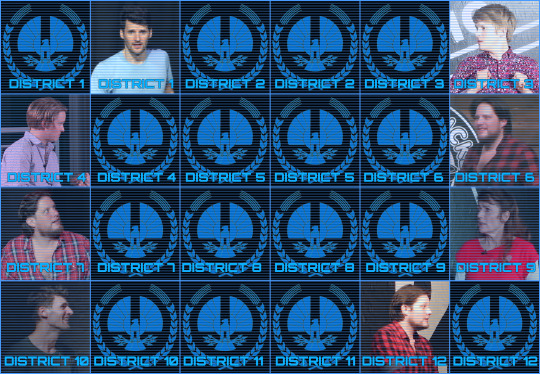
Deaths:
Jasper was killed by poison/falling
Robin was killed by Michael, Inga, and Johnny(?)
Kill Counts:
Pinocchio: 2 (Maria, Jimmy)
Inga: 2 (Jim L, Scottish Robin)
Caesar: 2 (Juliet, Pinocchio)
Chip: 3 (Clarissa, Marty, Hugh)
Jasper: 1 (Pinocchio)
Robin: 1 (Janae)
Peter: 2 (Priscilla, Caesar)
Michael: 1 (Scottish Robin)
Johnny: 1? (Scottish Robin?) (honestly I'm not sure if this really counts as Johnny's kill as neatly as it does Inga and Michael's, let me know your thoughts).
Game Meta

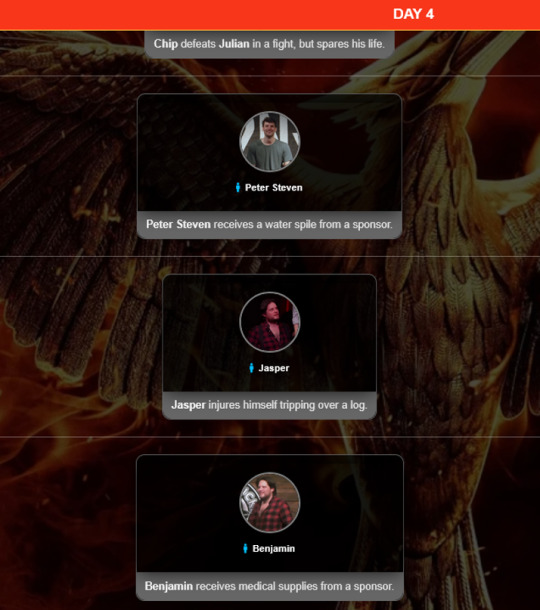
Today Embarks on Change. And by that I mean, I think this is the first time I have put a death in the story before it is revealed in simulator. However, I didn't make up Jasper's death out of the blue. Jasper "accidentally slips on a rock and tumbles down a cliff" on NIGHT 4, but if I left his death there, then I wouldn't be able to cleanly fit a final 8 interview session inbetween a Day and Night like this, so I opted to tie the injury from Day 4 and the death from Night 4 into one series of events. I will compensate by having Benjamin get medical supplies on Night 4 in addition to his other simulated event. (I could have chosen a different Night 4 death to move up to Day 4, but I chose the way I did because I have a feeling you guys will want said character to be around for as long as possible.)
#sfth hunger games#shoot from the hip#sfth fanfiction#sfthposting#sfth#sfth alexa#sfth johnny#sfth jasper#sfth julian#sfth benjamin#sfth michael#sfth inga#scottish robin#peter steven#sfth peter#my writing
48 notes
·
View notes
Text

Dacian Silver Hoard Found in Romania
Amateur metal detectorists uncovered a stunning collection of silver jewelry, the first evidence of a Dacian settlement in Mures County, Romania.
When their metal detectors creaked, amateur archaeologists Dionisie-Aurel Moldovan and Sebastian-Adrian Zăhan never expected to unearth a treasure of silver jewelry that might change the history books.
The Dacian empire had long been thought to be absent from Breaza commune, Mures county, in central Romania. When they handed the hoard over to the state authorities, the Mures County Museum confirmed its origins were Dacian, but how did it get here? Why was it here?
The treasure sparked more questions than answers. Could an ancient Dacian dwelling or even settlement be waiting to be discovered beneath the surface? According to experts, the find attests to it.
An aristocrat's jewelry collection
As famous warriors, the Dacian empire expanded its reach in central Europe to the Danube in the south and the Black Sea in the east. They have a rich history that includes historic clashes with the Roman Empire. However, their artistic tradition remains relatively unknown. By the 5th and 4th centuries BCE, they had already developed a rich culture of craftsmanship. Their use of gold and silver can be traced back to 350 BC, or over 2,400 years ago. The recent discovery of a hoard of silver treasure highlights this overlooked aspect of their culture.



The collection, which weighed over a pound, included a circular silver bracelet decorated with plant motifs, two knotted broaches, a smaller fibula with four knots, a neck chain finished with a link with ends hanging from it attached to three pendants, and a girdle of oval plates fastened with a series of links. Most likely, a rectangular plate decorated with solar motifs was attached to the belt.
A prominent member of Dacian aristocracy wore this silver with intricate details on special occasions, but the museum cannot confirm whether the hoard belonged to a man or woman yet. Whoever he or she might have been, the jewelry communicated the splendor of their wealth.
According to the Mures Museum, the owner of the hoard could have stashed it underground as an offering to a deity or to hide assets during a difficult moment. Many questions arise about why the owner disposed of their wealth as they never recovered it. But the local museum received much more than jewelry; it also received a sign in silver.
A Dacian settlement nearby?
The Dacians were the first people of Romania. According to Brittanica, north-central and western Romania made up the core of their territory. But the jewelry presents the first clear indication that the Dacians were present in this region in central Romania: Mures County. Until now, archaeologists never found any evidence of their presence, leading experts to conclude that a dwelling, settlement, or fortress must be nearby.
“We hope that through upcoming field research, the Dacian settlement and even the fortification in the area will able to be identified,” the museum stated in a press release.
The silver treasure is currently being documented, studied, published, and exhibited at the Mures County Museum.
By Maria Mocerino.

#Dacian Silver Hoard Found in Romania#Mures county#silver#silver hoard#silver jewelry#ancient jewelry#ancient artifacts#metal detecting#archeology#history#history news#ancient history#ancient culture#ancient civilizations#dacian history
30 notes
·
View notes
Text

Mount Rainier is surrounded by a series of lava ridges that radiate out from the summit. Rampart Ridge is a particular ridge in the Longmire area. The term “rampart” comes from defensive fortifications and is often used in geography to describe a ridge or landform resembling a wall. In this case the “wall” of Rampart Ridge was created when lava flows built up against the sides of an ancient glacier that once filled the valley. The glacier is gone but the lava cliffs remain.
Rampart Ridge can be viewed from the Longmire meadow along the Trail of the Shadows. The Rampart Ridge Trail climbs to a viewpoint at the top of this ridge that looks back down on the Longmire area.
NPS Photo of Rampart Ridge.
#Mount Rainier Landscape#mount rainier national park#Rampart Ridge#Longmire Meadow#Trail of Shadows#geology
34 notes
·
View notes
Text
The GREAT MONSTER HUNTER RANKING! PART 1

Of all the video game franchises out there, none have captured my imagination or just in general really hooked me as much as the Monster Hunter series has.
It's funny, really. I remember picking up the first game in 2004 when I was just six, only to not get anywhere because back then I couldn't figure out any game that didn't explicitly tell me what to do/where to go (which might be why I played so many licensed games back then).
Then, more than a decade later, I played Monster Hunter: World. And by that point, I was well beyond needing everything and everyone to hold my hand. Now, I could appreciate this series for what it was: a world where you could fight a massive array of diverse creatures inspired by myth and nature, craft equally varied weapons and armor from parts harvested from each hunt, and in my case, fall in love with an ecosystem of fantastical proportions.
So naturally, Wilds is my most anticipated game of the year. And in celebration, I'm taking a look at almost every monster, and giving my thoughts on their looks and, if applicable, how it feels to fight them (fair warning, I've only played World, Generations Ultimate, and Rise).
So, let's get started with the monsters that debuted in the one that started it all:
The Herbivores:
Here we have all the plant-eating monsters at the thorough bottom of the food chain. Even the smallest meat-eaters stand more than a chance of taking them down. Still, that doesn't make them any less fascinating.

"So beautiful...I'm gonna eat it!"
The Aptonoth is the first monster any player will encounter, and it's a great way to communicate how this fantasy world takes a plethora of cues from prehistory as opposed to just sticking to the typical tropes. It's a very appealing design, being a Parasaurolophus with the tail of an Ankylosaur. It almost makes me wish it were in the fossil record. Definitely an 8/10.

"Here, the monsters dine on turtle soup!"
The Apceros is a desert-brand herbivore, and with the fortification to match. This time, the Ankylosaur features extend to the entirety of the body. It's not quite as creative as Aptonoth, but it's still got that prehistoric charm. 5.5/10.
Really, I'd just like to note how the first two herbivores would be near-unstoppable in the real world. Any person would have all their bones broken by a pissed-off specimen of either species. But that just tells you how brutal the world of MH can be that they're still at the bottom of the pecking order.

"Oh, deer..."
Kelbi are...not all that fascinating. While it's amusing to hear how they may have inspired Unicorn-like myths in this world, there's a certain mono-horned horse that fits that bill way better later on. These guys are just...deer. Though I find it a little weird/amusing that the recent games don't allow you to kill them. Wonder why? 2/10.

"A most plant-based porker"
Now, HERE'S a less dull mammal herbivore right here! The Mosswine carries that prehistoric influence with that rather odd Pachycephalosaur-like dome on its head, as well as the neat symbiosis with moss that gives it its name. Sure, it's just an average-sized pig other than that, but it still has its charm. And yes, I am aware of the giant Mosswine quest. That's just hilarious. 5/10.

"So nice and floofy!"
First of all, Popo is such a cute name. And these are some cute animals, too! They look like little mammoths crossed with musk oxen, complete with big honking tusks. But its those stumpy noses with the hair hiding their eyes that just exudes adorable charm! Out of all the herbivores we've seen in the wild, these are the ones I'd want to hug the most (though they are a bit aggressive). 8/10.

"The reindeer Santa doesn't talk about"
Anteka are a lot like the Kelbi, in that they're fairly standard forest ungulates with a couple fantastical features, in this case being moose-elk. But they have a couple things over their mainland counterparts. For one thing, they fight back, they have an almost comical combo of a mustache and goatee (HA!), and those horns sure look ornate! Among herbivores, bigger is indeed better. 6/10.

"Could have sworn I saw something like this in Scotland"
The Epioth is, by far, one of my favorite Herbivore designs as of this writing. There's just something very eye-catching about it being a plesiosaur with distinctly koi fish-like details, right down to the appealing patterns. It really does feel like the kind of creature I could watch swim in an aquarium for hours and never get tired of how serene it all is. It's a shame they're stuck in the third generation due ot being inseperable from the water combat that dominated those games. Yeah, that's never coming back, not with how janky it was. Sure, I'm open to miracles, but I just don't see it working. At least we have no reason to hurt these beautiful monsters. 9/10.

"There's a brick wall with your name on it!"
On the other side of the spectrum, we have the Rhenoplos, which seems to take all our dated depictions of ceratopsians and roll them into one animal. Not the most interesting design, it's a little too much on the rhino side of things (plus they charge at EVERYONE), though the big ears are a nice flourish to indicate a sense it uses to compensate for terrible sight. 5/10.
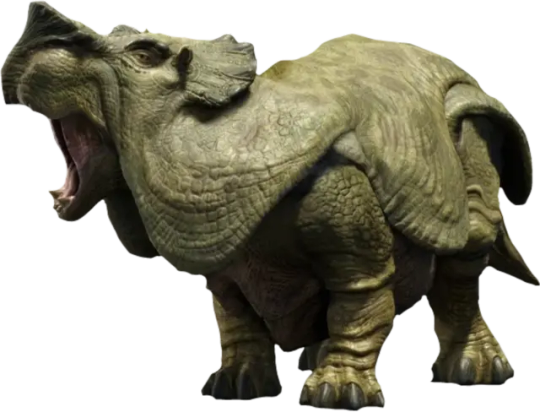
"It's not a hippo if it's not obliterating anything it sees and hears."
Slagtoths get a leg-up on the Rhenoplos for merit of originality. Sure, that huge droopy flap of skin is doing most of the heavy lifting, but the hippo-like look and that subtle ceratopsian crest on its head come together to make a stand-out herbivore. Plus, it's heightened aggression is a nice nod to how hippos are the embodiment of zero chill. 6/10.
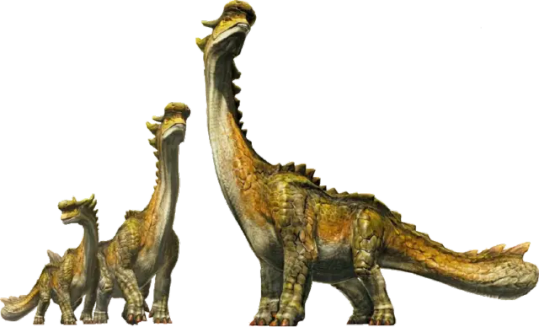
"The Great Valley is THAT way."
I really want to like the Larinoth, and I do, but something about it frustrates me nowadays. It's a sauropod, but its almost just as much of a pushover as the rest of the herbivores. For me, that just fits the absurd idea that Sauropods were cannon fodder for the neighboring predators, completely ignoring how they were nature's living kaiju during their time. But as monsters isolated from their pitiful spot on the food chain, they're a fun design for a fictional Sauropod. 8/10.
You'll run out of excuses one day, Capcom. Soon, you'll have an Elder Dragon that looks like a Brachiosaurus on steroids.
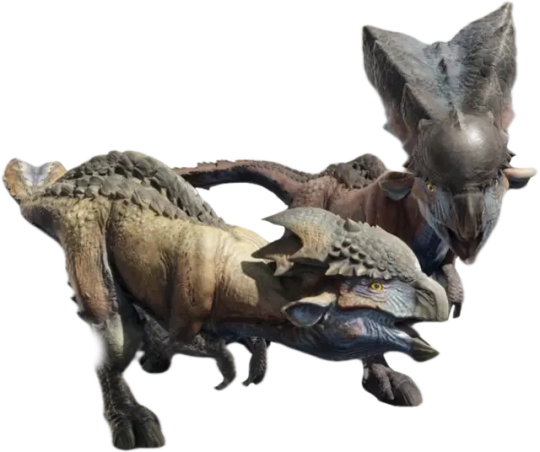
"Our heads hurt."
The Kestodon are basically souped-up Pachycephalosaurs. Nice headgear, but that's really it. 4/10.

"Keep attacking! ALWAYS KEEP ATTACKING!"
Meanwhile, Gastodon is a much more interesting design than its predecessor. They too look like Pachycephalosaurs, but instead of a bony dome on their heads, they have huge plumes of feathers in the shape of a dome, with small horns on each side of it. In practice, it makes them look almost part-bison. This, combined with their borderline-suicidal tendencies to mob hunters that slightly ticked them off, make them a solid win. 7/10.

"The big monsters got their goat."
Gowngoats are a fun concept. Not only does their fur look like a gown, as per the name, but it also kind of looks like an anteater's hairbrush-like tail. Not at all imposing, but definitely cute. I'd pet one for a fee. 6/10.
Next up, Neopterons, Carapaceans, and Temnocerans!
Index:
Herbivores
Neopterons, Carapaceans, Temnocerans
Bird Wyverns
Flying Wyverns
Piscine Wyverns, Amphibians, Leviathans
Brute Wyverns
Fanged Beasts, Fanged Wyverns
Elder Dragons
52 notes
·
View notes
Text





The Battles of Baldwin IV: A Warrior King
A Series
The Battle of Montgisard (1177)
Baldwin IV’s reign as King of Jerusalem was marked by constant warfare, both against external enemies and the physical toll of his own disease. While his body weakened, his mind remained sharp, and he proved himself to be an extraordinary military strategist and warrior. Despite the debilitating effects of leprosy, Baldwin led his armies in battle with an unwavering determination, achieving remarkable victories that have earned him a place in history as one of the greatest warrior kings of the medieval period.
One of Baldwin IV’s most famous victories came early in his reign during the Battle of Montgisard in 1177. At the time, Saladin, the Sultan of Egypt and Syria, was making significant strides in his campaign to recapture Jerusalem from the Crusaders. Saladin had gathered a massive army, reportedly over 26,000 strong, and was heading toward the heart of the Crusader Kingdom.
Baldwin, with a much smaller force of around 375 knights and 1,500 infantry, confronted Saladin near the town of Montgisard. Despite the overwhelming odds, Baldwin’s army launched a devastating surprise attack, leading to a decisive victory. Baldwin’s leadership during the battle was extraordinary, as he personally led his troops into battle, despite the physical limitations of his disease. The Crusaders’ victory at Montgisard slowed Saladin’s progress and gave Baldwin a brief but significant moment of triumph, which solidified his reputation as a capable and fearless leader.
The Struggles of War and Illness
While Baldwin was celebrated for his military prowess, his leprosy continued to deteriorate his health, making it increasingly difficult for him to participate in the day-to-day management of his kingdom. His ability to lead on the battlefield was at times hindered by the debilitating effects of the disease, which caused him to lose feeling in his limbs and suffer from frequent episodes of pain and weakness.
Despite these challenges, Baldwin continued to lead his forces in key battles, delegating some of his responsibilities to trusted regents and commanders when necessary. He was able to rally his knights and inspire them with his own example of resilience and courage. Baldwin’s ability to remain a symbol of strength in the face of such adversity played a significant role in maintaining the morale of his kingdom’s soldiers.
The Battle of Belvoir Castle (1179)
In 1179, Baldwin IV faced another crucial military challenge against Saladin’s forces, this time near Belvoir Castle in the Jordan Valley. Saladin’s forces had laid siege to the castle, and Baldwin once again demonstrated his strategic brilliance. Baldwin's forces, though vastly outnumbered, managed to hold their ground and prevent Saladin from capturing the castle. This victory was another testament to Baldwin’s leadership and military acumen, despite his worsening health.
The battle was not just about military might—it was about preserving the morale and fortifications of the Crusader Kingdom. Belvoir Castle, strategically located, was essential for the defense of Jerusalem, and Baldwin’s victory ensured that the castle remained in Crusader hands for the time being. His ability to defend such key positions helped delay Saladin’s advances, giving Baldwin precious time to prepare for future conflicts.
The Battle for Jerusalem’s Survival
As Baldwin’s health continued to decline, the Crusader Kingdom of Jerusalem was increasingly vulnerable to Saladin’s forces. Baldwin’s leprosy had robbed him of much of his strength by the early 1180s, and he had to rely more heavily on his regents, including his sister Sibylla and her second husband Guy of Lusignan, to govern. However, Baldwin’s military leadership remained an essential part of the kingdom’s defense.
In 1183, Baldwin IV faced one of his most difficult challenges yet when Saladin launched a full-scale assault on the Kingdom. While Baldwin was no longer physically able to lead his troops in battle, his strategic guidance and the loyalty he inspired in his knights ensured that the kingdom would continue to hold out for several more years. Baldwin’s final military campaign was focused on preventing Saladin from capturing Jerusalem, but his worsening illness made it increasingly difficult to continue leading the Crusader forces.
Baldwin IV’s military legacy is one of remarkable perseverance and tactical brilliance. Despite the crippling effects of leprosy, he consistently proved himself a formidable leader on the battlefield. His victories, including the Battle of Montgisard and the defense of Belvoir Castle, ensured that the Crusader Kingdom of Jerusalem endured against one of the most powerful military leaders of the medieval period, Saladin. In the following posts, we will explore Baldwin IV’s struggles with his regency and the challenges his kingdom faced in the final years of his reign.
#Leper King#Baldwin IV#Crusader Kings#Crusaders#History#History Buff#Medieval History#Warrior King#world history
34 notes
·
View notes
Text
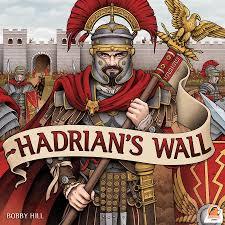
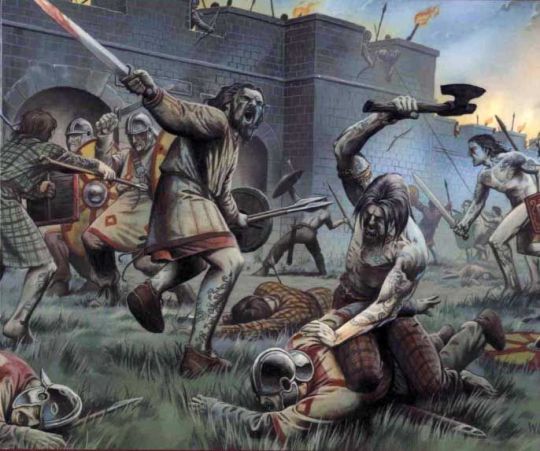
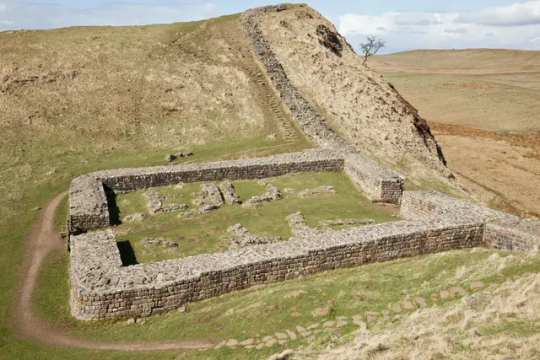


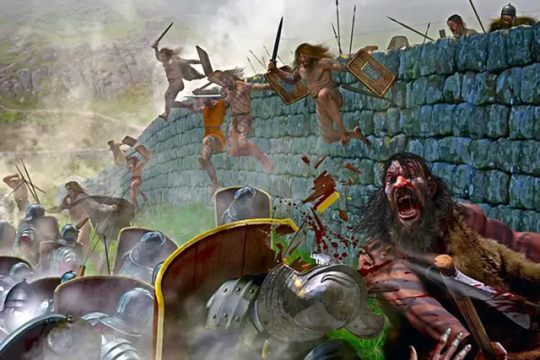
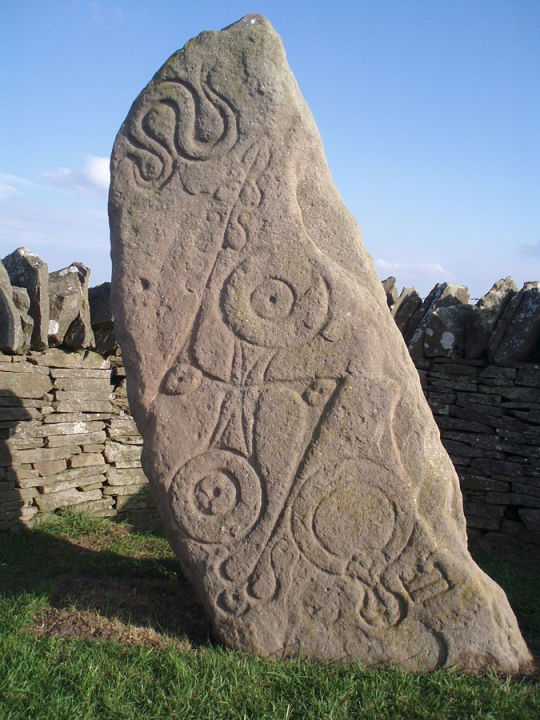
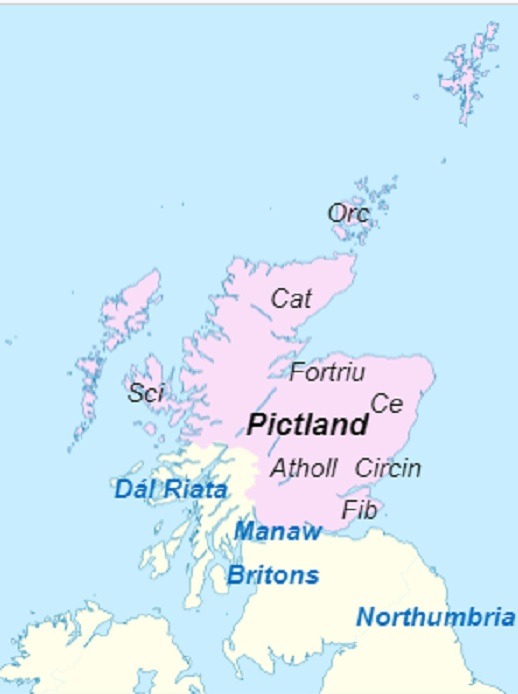

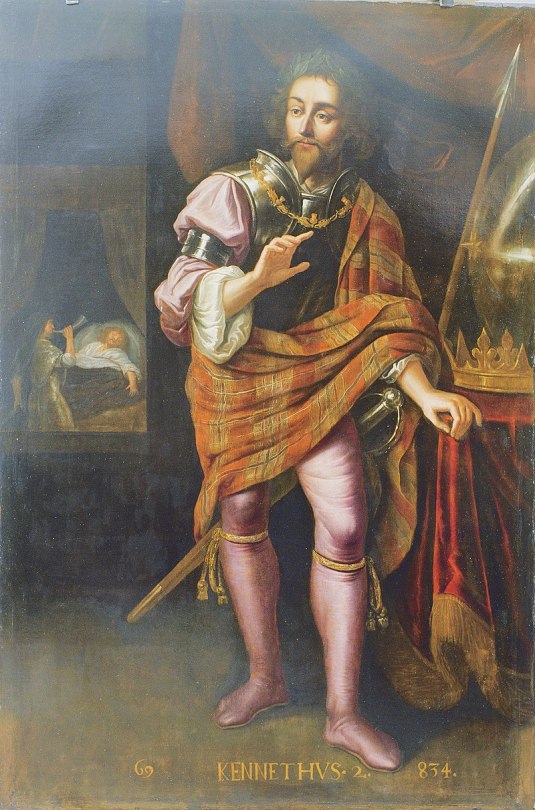
January 24th, 76AD, is said to be the likely date of birth forPublius Aelius Hadrianus, who built Hadrian’s Wall.
When the Romans invaded the British Isles they held, large parts of what is now Scotland, even after the construction of Hadrian’s Wall in AD 122, there were large forts around the country at varioustimes, the largest of which was Trimontium located at Newstead, near Melrose, in the Scottish Borders. It was occupied intermittently from about 79 to 184 AD and was the largest of the "outpost" forts after the construction of Hadrian's Wall
Hadrian’s Wall was largely abandoned for about twenty years from .AD 138, when the Romans established a new frontier in Scotland between what are now the Firths of Forth and Clyde, where they built the Antonine Wall.
The Antonine Wall was more of a very large ditch, and my old flat would have been part of the structure, part of the "wall" is on land only yards from me. I got into trouble for calling it a ditch from a Roman historian before, so will add that it was much more, the thing is it more or less looks like one just now, much of the fortifications are long gone.
Hadrian is noted for his interest in architecture and the number of provinces he visited whilst Emperor. He is likely to have visited Britain in AD 122, after some kind of conflict in the preceding years, and we know that it was in this period that construction of the Wall started. It has also been known as Picts' Wall, or Vallum Hadriani in Latin.
The origin of the Picts is clouded by the many fables and legends about them. There are numerous theories as to who the Picts were and where they came from. Experts even disagree over what they ate and drank and what language they spoke although some point to the existence of a distinct Pictish language, which today is believed to have been an Insular Celtic language, closely related to the Brittonic spoken by the Britons who lived to the south.
Often described as savages the Picts were an ancient and artistic people who defied the might of Rome which conquered the rest of Britain. They were a sophisticated , hardworking, clever people, skilled in farming and fishing.
You would have thought a savage tribe would have been an easy conquest for the Romans, but the Picts were anything but that. Picts are first recorded in history in the third century AD. Eumenius, a Roman writer, describes the "pictus" as fierce and skilled in battle. It is not clear whether "pictus" (the Latin for painted) was intended, or if this is a Latin form of some indigenous name. I prefer to think of them as the "Painted People"
Although the Romans reached Scotland and often defeated them in battle, they never conquered the Picts or Pictland. The Roman Empire's expeditions north resulted in few permanent gains.
Scotland's sculptured stones, created by the Picts of ancient Alba tell the stories of a race of people who defied Rome and survived the invading Vikings, thus preserving a separate culture and race in Scotland. It is in these sometimes mighty, sometimes delicate stones that the history of ancient Scotland is now recorded.
There are many of these slabs on display in The National Museum of Scotland in Edinburgh, as well as a fine display in The Hunterian in Glasgow.
When the Romans left the Picts were often attacked by the Britons and eventually all the Pictish tribes agreed to support one High King who would rule all of Pictland.
It's said the Picts, unusually, were a matrilineal society, i.e. bloodlines passed through the mother. Pictish kings were not succeeded by their sons, but by brothers, nephews or cousins as traced by the female line in a complicated series of intermarriages between 7 royal houses. It is this rare form of succession which in 845 AD gave the crown of Alba and the title Rex Pictorum - King of the Picts - to the son of a Pictish princess by the name of Kenneth, Son of Alpin, he is generally accepted by most historians as the first of the kings of Scotland, follwing on from his reign as King of Dál Riata. As usual though, not al agree on this.
The Picts survived as a distinct people until early in the 10th century. However, there is no record of them dying out or moving elsewhere. It is most likely that the Picts simply integrated into the large population within the developing multi-ethnic nation of Scotti, Picts, Celts, Britons and Angles which we now call Scotland. The map, from wiki says this was how their lands looked as late as the 7th century. The last pics are of two Pictish people and a 15th century depiction of King Kenneth.
195 notes
·
View notes
Text
The Human Battle Moon is... preposterous
After the United Federation unveiled their Battle Moon - a monumental series of fortifications, combat bases, planetary shields, massive fighter bays and factories, and more weapons platforms than you could count aimed at every direction, the Humans became disturbingly excited.
After only a few short months, Humanity unveiled their counterpart, and, well... There's no good way to say it, so we'll just say it:
It's three moons stacked in a row with a giant rail gun going through all of them.
They call it the Death Kebab.
____________________________
(I was gonna write something more but sometimes you need to know when not to, so I'll leave this post at that)
#humans are deathworlders#humans are space oddities#humans are space orcs#humans are space australians#humanity fuck yeah#carionto
257 notes
·
View notes
Photo

Utah Beach
Utah Beach was the westernmost of the five beaches attacked in the D-Day Normandy landings of 6 June 1944 and the one taken with the fewest casualties. Paratroopers were also dropped behind Utah, and despite being widely dispersed and suffering heavy casualties, they managed to secure this western flank of the invasion and liberate the first French town, Ste-Mère-Église.
Operation Overlord
The amphibious assault on the beaches of Normandy was the first stage of Operation Overlord, which sought to free Western Europe from occupation by Nazi Germany. The supreme commander of the Allied invasion force was General Dwight D. Eisenhower (1890-1969), who had been in charge of the Allied operations in the Mediterranean. The commander-in-chief of the Normandy land forces, 39 divisions in all, was the experienced General Bernard Montgomery (1887-1976). Commanding the air element was Air Chief Marshal Trafford Leigh Mallory (1892-1944), with the naval element commanded by Admiral Bertram Ramsay (1883-1945).
Nazi Germany had long prepared for an Allied invasion, but the German high command was unsure where exactly such an invasion would take place. Allied diversionary strategies added to the uncertainty, but the most likely places remained either the Pas de Calais, the closest point to British shores, or Normandy with its wide flat beaches. The Nazi leader Adolf Hitler (1889-1945) attempted to fortify the entire coast from Spain to the Netherlands with a series of bunkers, pillboxes, artillery batteries, and troops, but this Atlantic Wall, as he called it, was far from being complete in the summer of 1944. In addition, the wall was thin since there was no real depth to the defences.
Field Marshal Gerd von Rundstedt (1875-1953), commander-in-chief of the German army in the West, believed it would be impossible to stop an invasion on the coast and so it would be better to hold the bulk of the defensive forces as a mobile reserve to counterattack against enemy beachheads. Field Marshal Erwin Rommel (1891-1944), commander of Army Group B, disagreed and considered it essential to halt any invasion on the beaches themselves. Further, Rommel believed that Allied air superiority meant that movements of reserves would be severely hampered. Hitler agreed with Rommel, and so the defenders were strung out wherever the fortifications were at their weakest. Rommel improved the static defences and added steel anti-tank structures to all the larger beaches. In the end, Rundstedt was given a mobile reserve, but the compromise weakened both plans of defence.
The German response would not be helped either by their confused command structure, which meant that Rundstedt could not call on any armour (but Rommel, who reported directly to Hitler, could), and neither commander had any control over the paltry naval and air forces available or the separately controlled coastal batteries. Nevertheless, the defences were bulked up around the weaker defences of Normandy to an impressive 31 infantry divisions plus 10 armoured divisions and 7 reserve infantry divisions. The German army had another 13 divisions in other areas of France. A standard German division had a full strength of 15,000 men.
Continue reading...
336 notes
·
View notes
Text
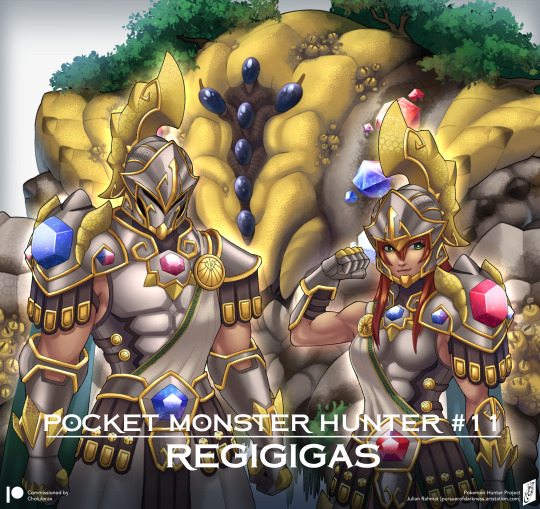

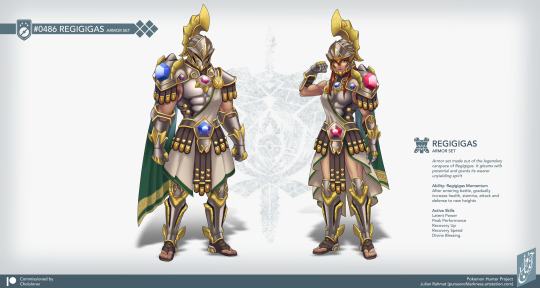
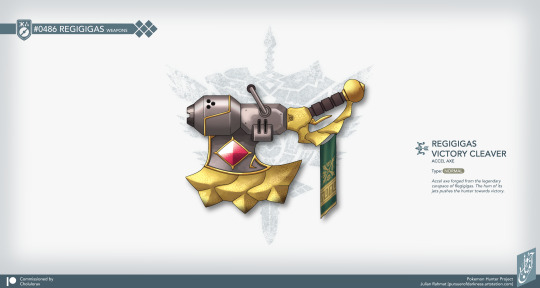
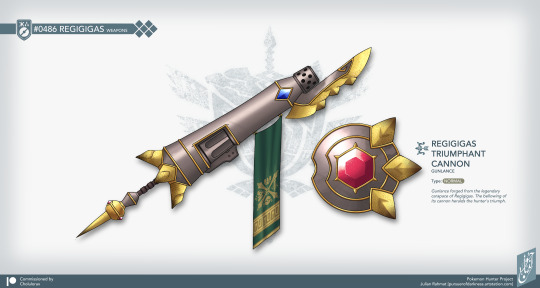
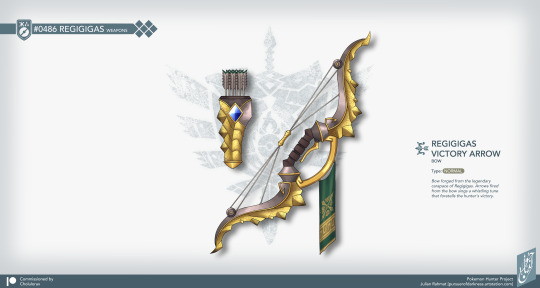
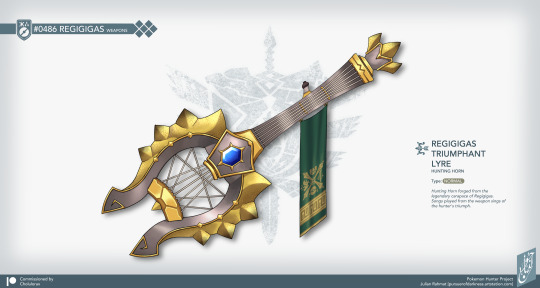

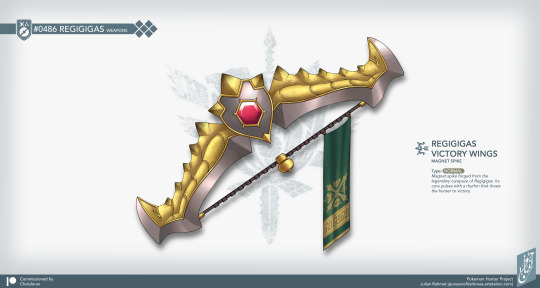
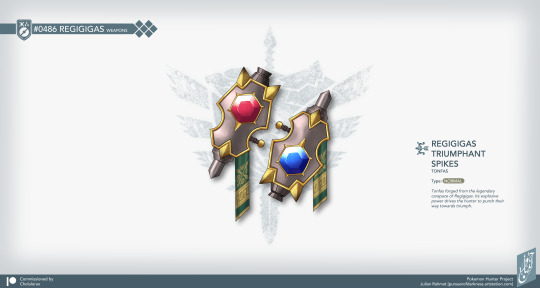
If you like what I do, please consider supporting me on Patreon
" The monks at the ancient Snowpoint Temple arrived with a strange report: The "statue" on the temple grounds turns out to be a long dormant pokemon! The League has deployed artillery and built fortifications on site, and we need Hunters on standby when it finally awakens." - Snowpoint dispatch
Regigigas, the Collosal Pokemon is the final in a series commissioned by Patreon supporter Cholulorax. It is the leader and creator of the Legendary Titans.
Pokemon
Regigigas can be considered as a "final boss" monster, as the battle with it takes place at the fortified Snowpoint Temple grounds. Not much is known about Regigigas, but it appears that it predates the building of the Snowpoint Temple, as it was thought to be a statue of a long forgotten deity, but recent cracks in the rock revealed it to be a long dormant Pokemon.
When Regigigas finally wakes, it lumbers slowly, its attacks weak and slow. But as the battle drags on, it becomes quicker, tougher and more powerful. Hunters must slay it before its strength returned fully, as it is bound to devastate its surroundings
Researchers theorize Regigigas may be the progenitor of all of the other titans, as many similarities can be found with the titans.
Armor
Regigas boosts the hunter's strength the longer they are in combat.
Weapons
Regidrago weapons have high Normal (Raw) attack, but average sharpness and negative affinity, but can be offset by exploiting Regigigas's armor
Outro
We will return to the regular releases, starting with Rayquaza. I apologize for delaying it for more than a year, as doing this as commission really helped me out financially and I was strapped for cash since moving to my new home. Thank you for staying and supporting this project.
But going forward I will be doing only one set of weapons and armor for each Pokemon form, as it allows me to not hold back and ration my ideas. So a normal pokemon will get 1 pair armor (Male and female) and 2 weapons, instead of 2 pairs of armor and 4 weapons. But pokemon with multiple powerup forms and regional variants will get 1 set each.
197 notes
·
View notes
Photo
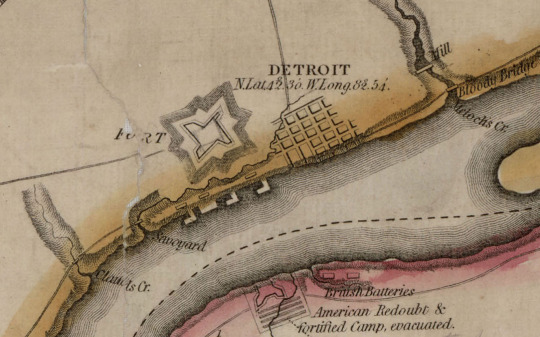
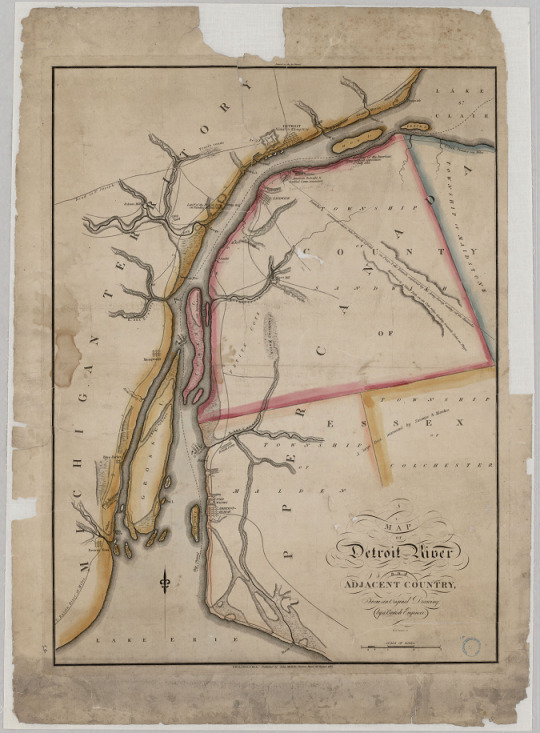
Map of Detroit River and Adjacent Country, August 26, 1813.
Record Group 64: Records of the National Archives and Records Administration
Series: Reference Maps and Drawings
File Unit: Michigan
Image description: Zoomed-in portion of a map of the Detroit River, showing the tiny grid of streets that indicate the town of Detroit, and the fort just to its west. Across the river on the Canadian side of the river are British Batteries, and the American Redoubt and fortified Camp, evacuated.
Image description: Map of the Detroit River from Lake Erie to Lake St. Clair. The Canadian townships and the Michigan Territory side of the river are bordered in different colors. Military fortifications and rivers are labeled, as is a tiny section of streets labeled “Detroit.” What we now know as Belle Isle is labeled “Hog I.”
#archivesgov#August 26#1813#1800s#maps#maps and charts#Detroit#Detroit River#Canada#gotta say Belle Isle is a nicer name
196 notes
·
View notes
Text
Heritage News of the Week
Discoveries!
As construction crews churned up dirt to renovate a football pitch in Vienna last October, they happened upon an unprecedented find: a heap of intertwined skeletal remains in a mass grave dating to the first-century Roman empire, most likely the bodies of warriors killed in a battle involving Germanic tribes.
Obsidian artifacts unearthed in Alberta offer new clues on prehistoric trade routes
Inky black shards of volcanic glass unearthed in Alberta are helping researchers trace the movements of Indigenous people across Western Canada centuries ago.
“House of Life” among new discoveries at the Ramesseum
A joint French and Egyptian archaeological mission has made several major new discoveries at the Ramesseum, the mortuary temple for Ramesses II.
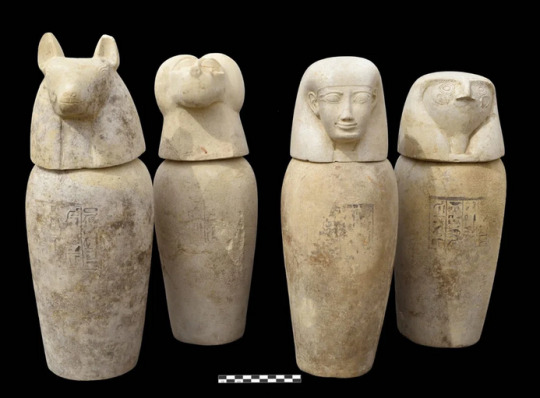
Walls of ancient Greek colony of Selinunte discovered
Italian authorities announced a series of new discoveries at the site of Selinunte that underscore the city’s illustrious past
A life-sized statue of a bejeweled ancient priestess is unearthed in Pompeii
Archaeologists in Pompeii have made the astonishing discovery of two life-sized relief sculptures of a man and a woman draped in classical robes. The pair, possibly husband and wife, stand within a niche on the boundary wall of a monumental ancient tomb.
Ukrainian soldiers unearth ancient Greek burial
Ukrainian soldiers digging defensive fortifications stumbled upon an ancient Greek burial site in southern Ukraine.
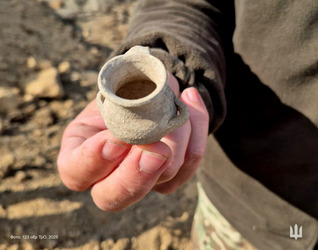
Tiny pot!
Ancient mausoleum with gladiator’s epitaph unearthed in Italy
Archaeologists excavating a necropolis in Liternum Archaeological Park in Campania, southern Italy, have uncovered two ornate funerary enclosures, one of which belonged to a gladiator and bears an epitaph etched in marble.
Researchers study erratic boulders from Frosh Giant legends
A study funded by The National Science Centre, Poland, has analysed both the geological and mythical origins of the erratic boulders scattered across northern Poland.
Rare wall paintings found in Cumbria show tastes of well-off Tudors
Rare and fantastical 16th-century wall paintings which shine light on the interior design tastes of well-off Tudors have been revealed in a former hunting lodge.
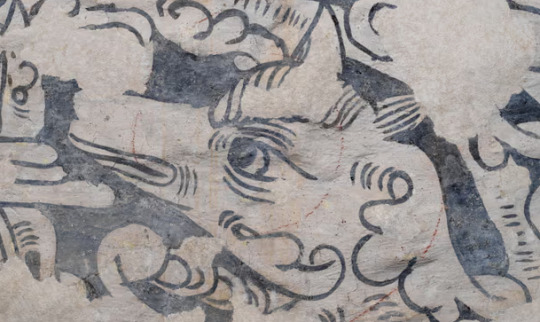
3-year-old picks up 'beautiful stone,' discovers 3,800-year-old scarab amulet in Israel
A 3-year-old girl who was walking with her family along a trail in Israel unexpectedly found a piece of history: a 3,800-year-old scarab amulet.
Extensive Roman settlement found beyond the borders of the Roman Empire
Archaeologists excavating in Delbrück-Bentfeld, northwestern Germany, have uncovered evidence of an extensive Roman-era settlement beyond the borders of the Roman Empire.
More caves discovered in Nottingham’s hidden subterranean world
Nottingham, nestled in England’s East Midlands, is famously known as the legendary home of Robin Hood. But beyond its folklore, the city also boasts the UK’s largest network of caves, carved by hand into the soft sandstone bedrock as early as the 9th century AD.
Stunning reconstruction reveals warrior and his weapons from 4,000-year-old burial in Siberia
A new full-body reconstruction depicts a warrior wearing armor and holding weapons, all of which were found in a 4,000-year-old burial in Siberia.
Hallstatt dagger discovered on Baltic Coast
Researchers from the St. Cordula Association for the Protection of Monuments have discovered a rare Hallstatt-era dagger, revealed after a storm caused a section of a Baltic Sea cliff to collapse.
Unknown human lineage lived in 'Green Sahara' 7,000 years ago, ancient DNA reveals
Researchers analyzed the ancient DNA of two mummies from what is now Libya to learn about people who lived in the "Green Sahara" 7,000 years ago.
AI assists archaeologist in mapping Angkorian-period structures
Archaeologists have created deep learning models, specifically with DeepLab V3+, for semantic segmentation to identify previously unknown reservoirs from the Angkor period.
Researchers posit new theory about children's role in prehistory
A new study suggests that children may have played a special role as mediators between the physical and spiritual worlds,
Traces of Ecuador’s first colonial-era city unearthed in Riobamba
Archaeologists from Ecuador’s National Institute of Cultural Heritage have uncovered remnants of an early colonial-era city that was destroyed by a devastating earthquake in 1797.
Oldest vanilla pod in Europe found in Prague
Excavations within Prague Castle yielded the oldest vanilla bean pod in Europe. Radiocarbon dating indicates that it was placed there between 1513 and 1666, a time that coincided with the reign of Holy Roman Emperor Rudolf II.
Museums
From Guy Burgess’s briefcase to microdots secreted in talc, an exhibition reveals remarkable items from the agency’s archives – and the extraordinary stories behind them
Take two Van Goghs daily: the growing popularity of museum prescriptions
Research backs schemes that encourage doctors to prescribe time in cultural institutions to boost mental health and reduce loneliness
Smithsonian director pledges museum’s independence amid White House order of internal review
The Smithsonian Institution’s leadership is standing firm after the Trump administration ordered a review last month of its exhibits, accusing the museum network of pushing a “race-centered ideology.”
Dozens of museum agency workers put on leave amid Trump overhaul
Processing of 2025 grant applications has been halted after Trump moved to dismantle the Institute of Museum and Library Services.
US museums seek to provide safe spaces for LGBTQ+ communities amid government rollbacks of their rights
As Republicans and the Trump administration target DEI initiatives and queer and trans communities, vocal leaders at a few institutions are standing firm
Three historical treasures rescued from London’s River Thames
Thanks to the efforts of mudlarks, Londoners can marvel at Tudor headwear and an elaborate Viking weapon.
God, I wish I could see this exhibit
'Last in England' smashed medieval statue recreated
A 15th century statue that was found smashed into 170 fragments behind a church wall has been painstakingly pieced together using computer animation.
Museums in southern Brazil still recovering after last year’s floods
Damage and destruction decimated visitor numbers to cultural events and institutions last year but optimism is high they will return in 2025
Yorkshire Museum crowdfunds to acquire ‘game-changing’ iron age hoard
The Yorkshire Museum in York is close to raising £30,000 through a crowdfunding campaign to acquire a major iron age hoard recently discovered in the local area by a metal detectorist.
Medieval scroll found in shoebox goes on display
A rare medieval illuminated manuscript uncovered in the archive of a York convent is going on display for the very first time.
Museums are losing social media followers amid users' mass X-odus
Some institutions have ditched their accounts in protest, while others have chosen to “quiet quit” and stopped posting on the Elon Musk-owned platform
Repatriation
The famed museum recently returned a 12th-century Buddha sculpture that it says was stolen from the Kathmandu Valley. However, the institute’s announcement failed to mention the statue had once belonged to wealthy donor Marilynn Alsdorf.
Heritage at risk
Videos of Sudan’s national museum showing empty rooms, piles of rubble and broken artefacts posted on social media after the Sudanese army recaptured the area from the paramilitary Rapid Support Forces in recent days show the extent of looting of the country’s antiquities.
EPA head shutters agency’s National Environmental Museum
In a statement issued on March 31, EPA administrator Lee Zeldin said the closure would save taxpayers about $600,000 per year. The small museum was created in 2016, dedicated to the nation’s environmental history, and included exhibits about prevention measures during the Covid-19 pandemic, environmental justice, and efforts to address climate change.
$600,000 a year is like one day of the military budget
ETA: I have been informed it's actually less than 30 seconds of the daily military budget o_O
Historians condemn executive order targeting Smithsonian
The American Historical Association, a D.C.-based advocacy group, has issued a statement condemning a recent White House executive order targeting the Smithsonian Institution, which relies on federal funding to drive a significant part of its operation.
New York Attorney General sues Trump administration over museum and library funding cuts
New York State Attorney General Letitia James has filed a lawsuit—alongside 20 other attorneys general—against the Trump administration over an executive order that effectively shuts down three federal agencies responsible for supporting libraries, museums, minority-owned businesses, and labor mediation services.
What the dismantling of USAID means for world heritage
Does USAID still exist? For the heritage world, this – and the fate of heritage projects connected to shrinking amounts of development funding more generally – is a pressing one. Building on previous American efforts in technical assistance during the early years of the cold war, the Kennedy administration founded USAID in 1961 at the start of the UN’s first ‘Development Decade’. Under the second Trump administration, however, the organisation has found itself cut to ribbons.
Odds and ends
Amid the site in rural Jamaica that once belonged to a Guardian financier may lie a treasure trove of artefacts that tell the story of Britain’s history of colonisation and enslavement.
Bid to boost Hadrian's Wall dog ranger volunteers
Volunteer dog rangers are being recruited to help visitors at Hadrian's Wall. Current rangers - golden retriever Mr Darcy and Bear, a mioritic shepherd dog - have been walking the area since last summer along with their owners, who offer advice and hand out poo bags, water and treats.
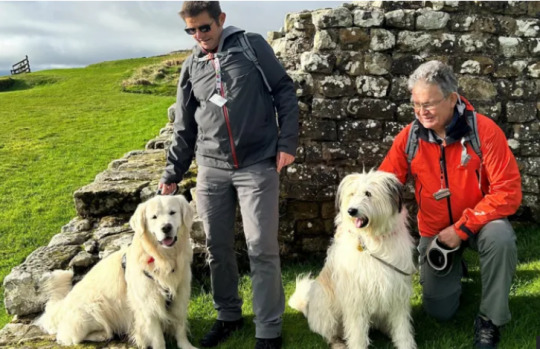
The best museum volunteers
Salvaging the historic tiles of California’s burned fireplaces
After devastating fires blazed through the region, residents are holding on to the intricate glazed tiles that survived — small but meaningful remnants of their homes.
Dublin's Molly Malone statue to get stewards to stop 'groping'
Stewards are to be stationed next to a statue of Molly Malone in Dublin to discourage people from touching it. Dublin City Council is running a pilot scheme for a week in May after complaints of people groping the sculpture's breasts.

Cute when it's a dog statue, weird and kind of gross when it's a woman
'I love my country': Ken Burns on showing the dark parts of US history
Ahead of his upcoming PBS documentary, The American Revolution, acclaimed film-maker Ken Burns tells BBC special correspondent Katty Kay about his unique approach to chronicling US history, from war and conflict to baseball and jazz.
In search of Greece's once-great Jewish city
Once home to a thriving Jewish majority, Thessaloniki holds fragments of a lost world. One traveller's journey to find them leads to something even more powerful: living memory.
Point:
Counterpoint:
Dinosaur tracks uncovered at site of Bonnie Prince Charlie’s refuge
When Bonnie Prince Charlie fled the Scottish Highlands after defeat at the Battle of Culloden, his route may have crossed the fossilised footsteps of massive meat-eating dinosaurs, researchers say.
Bonnie Prince Charlie being eaten by a theropod would be an incredible ending to Outlander
#heritage news of the week#museums#it's looking grim for us institutions#archaeology#history#more historic sites should have dog volunteers#also stop groping molly malone you weirdos#paleontology#the post is extra long this week
12 notes
·
View notes